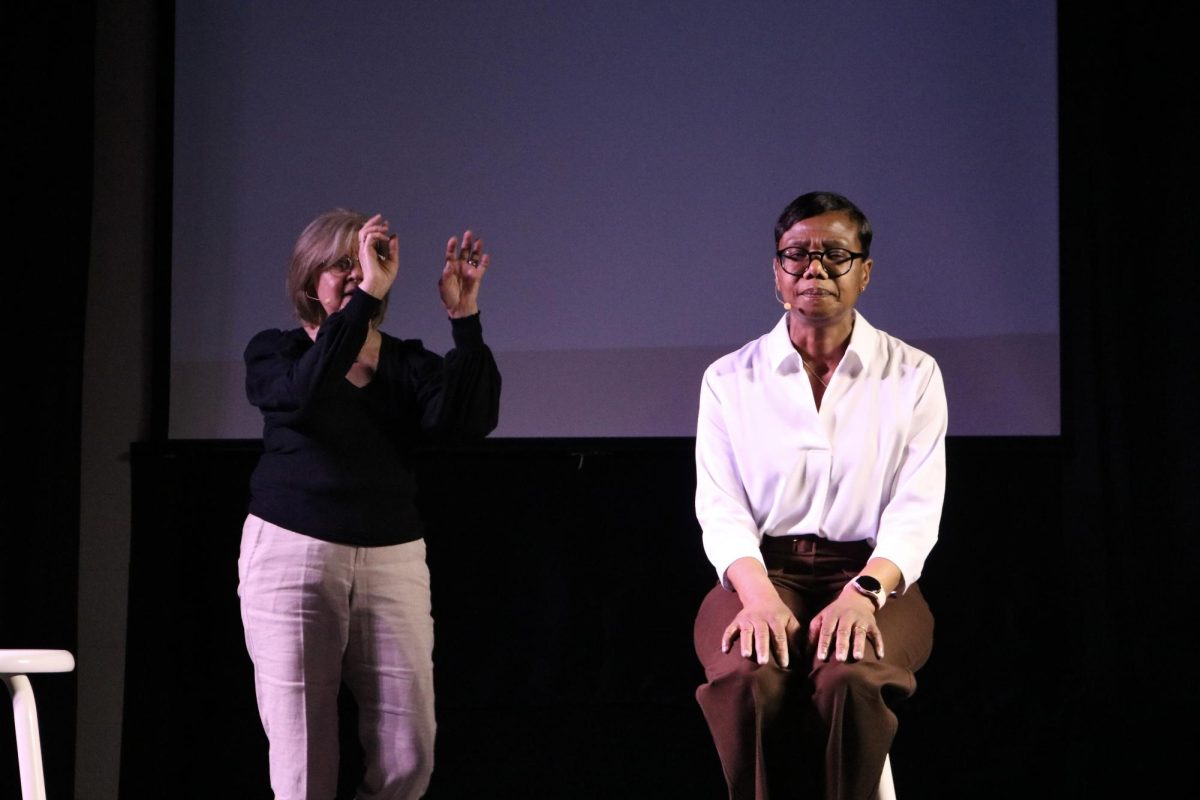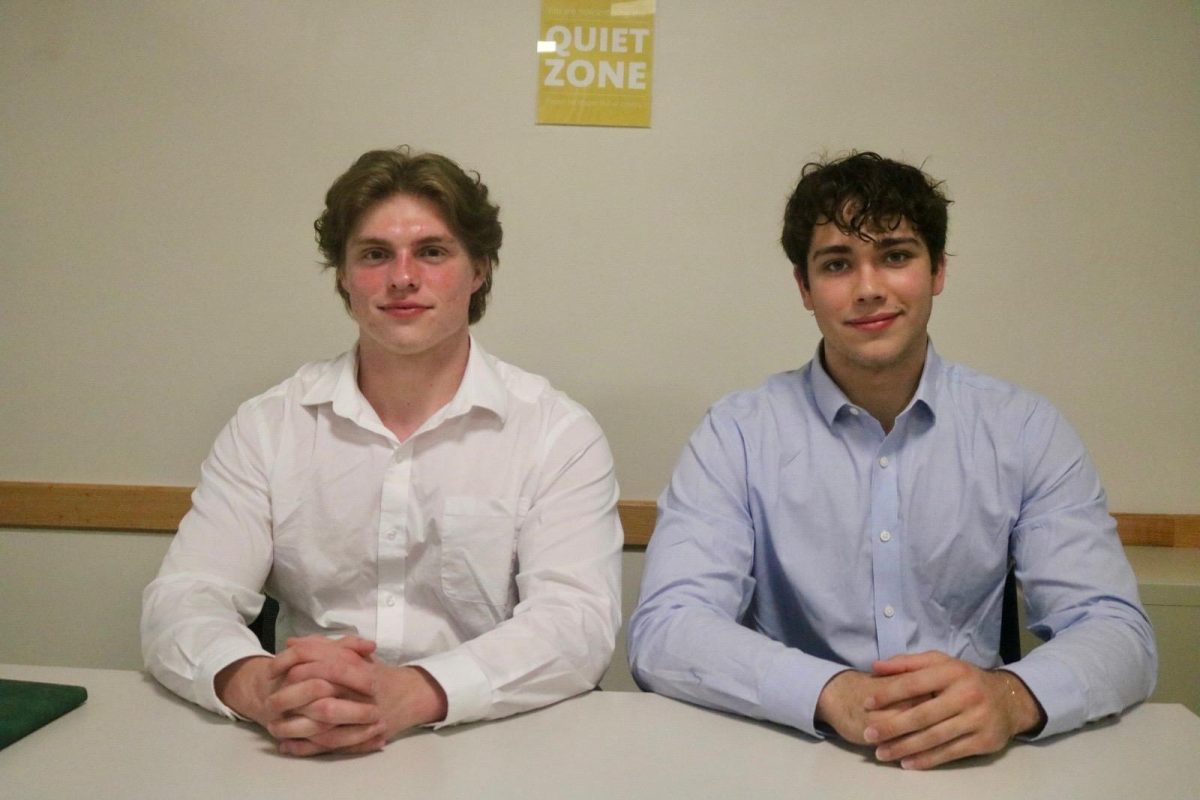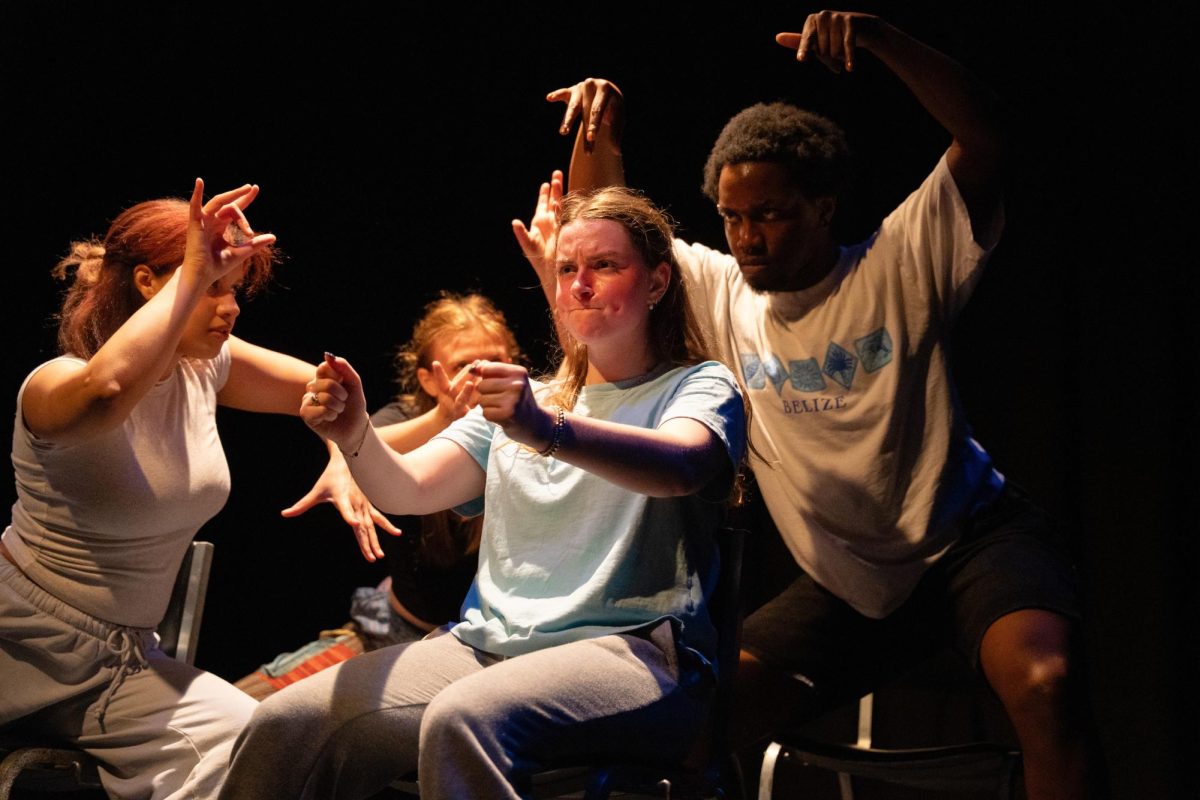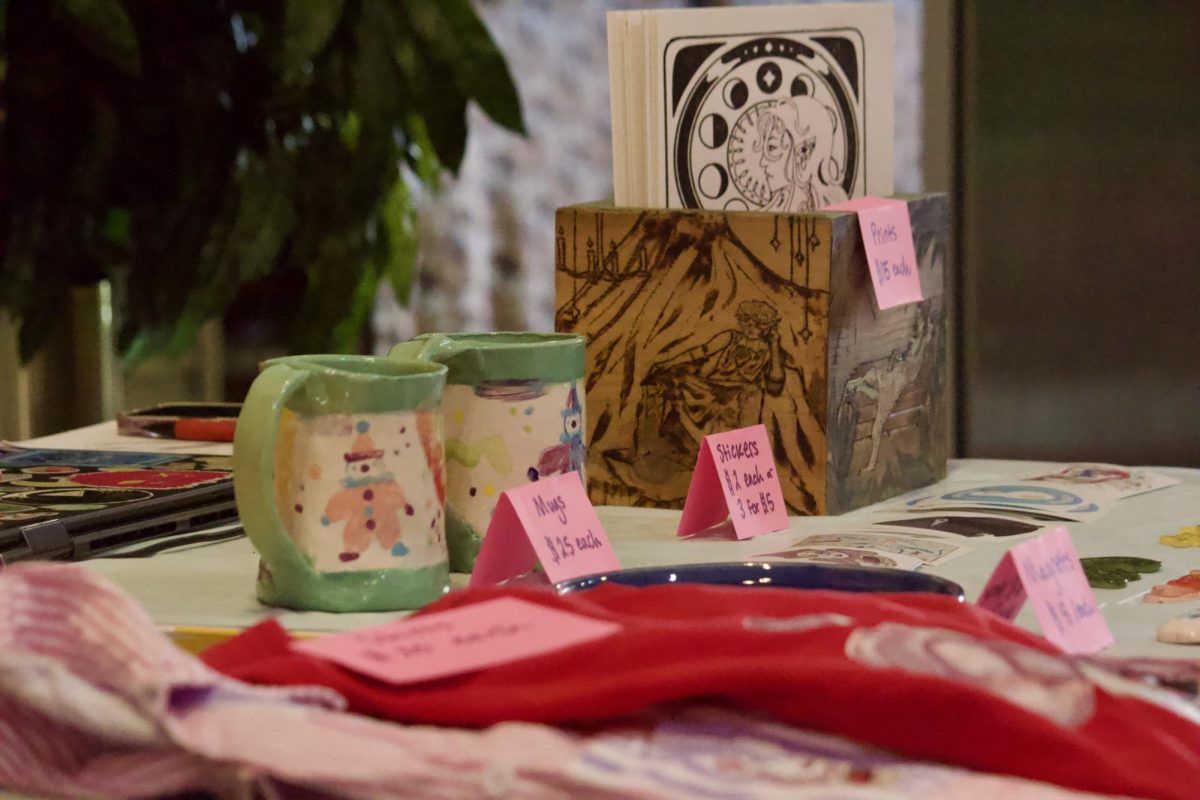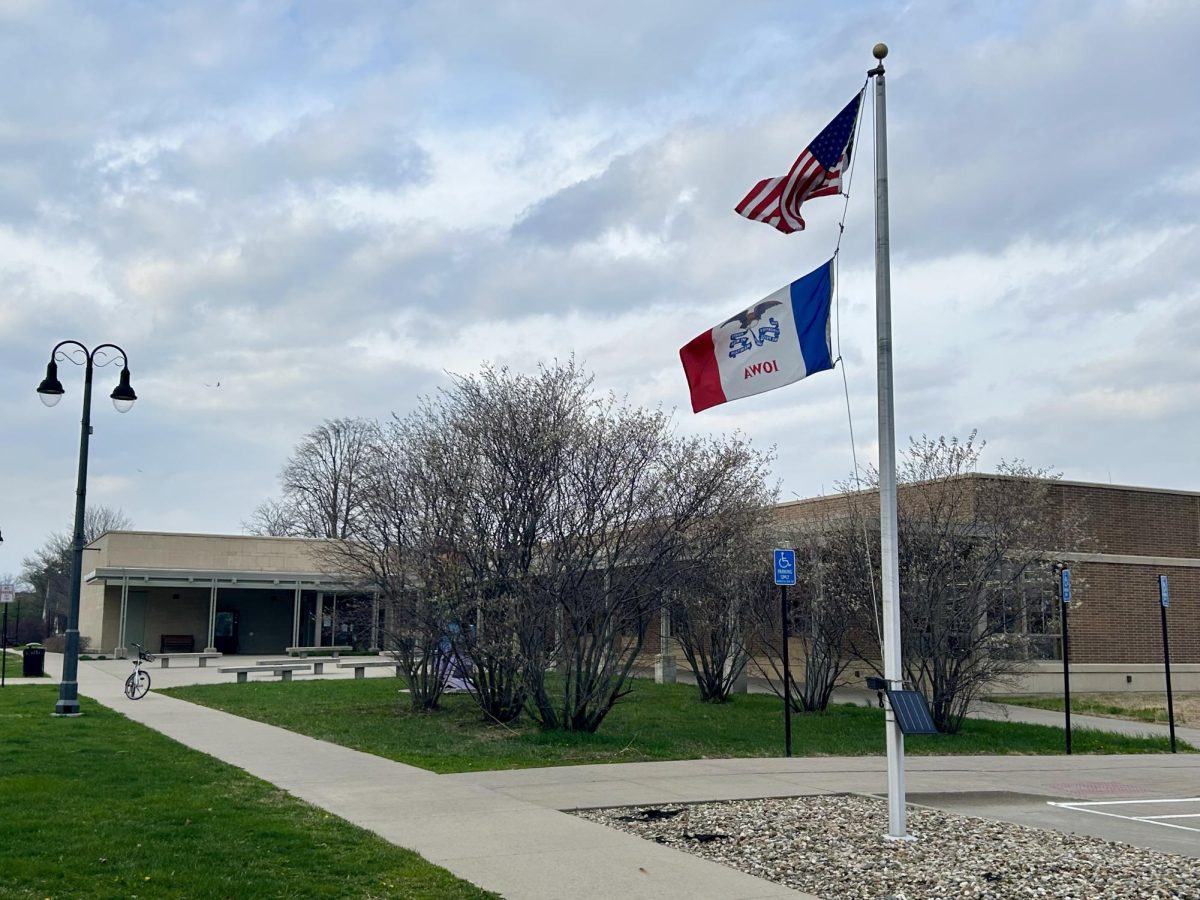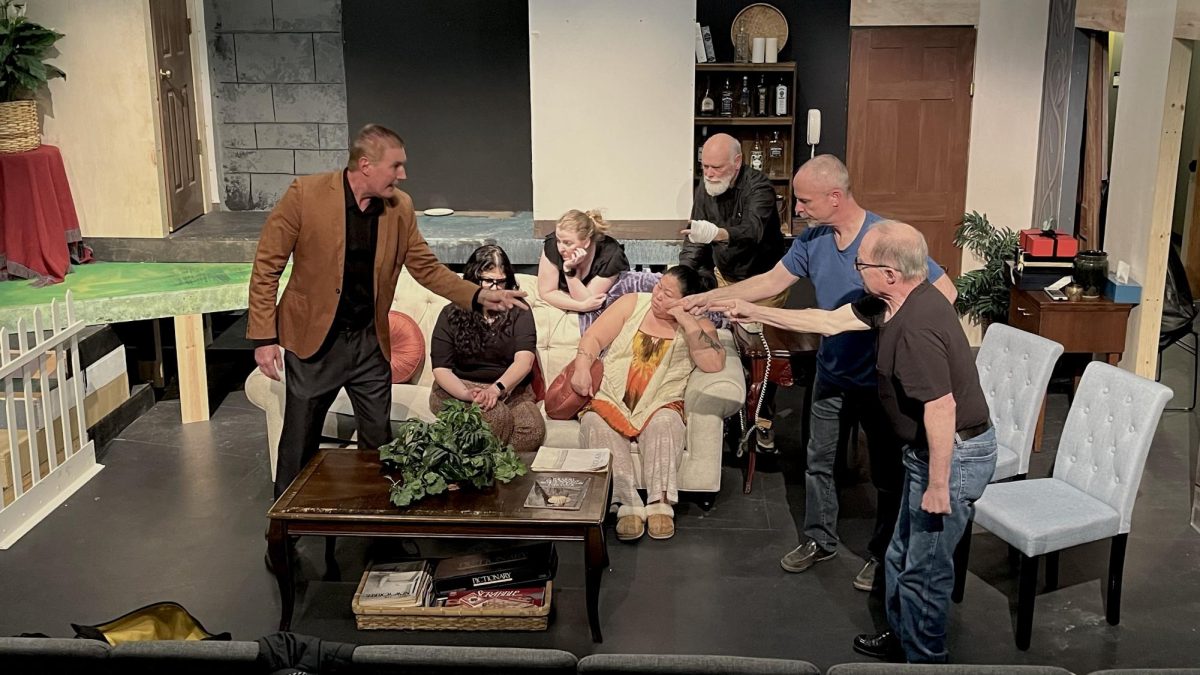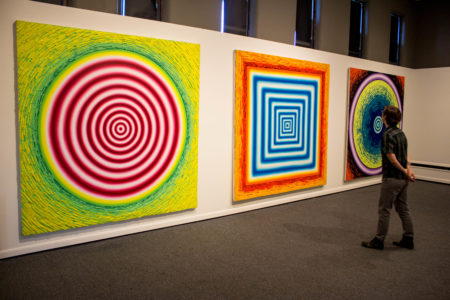
By Merlin Matthews
matthews17@grinnell.edu
An exhibition of the works of John Schlue titled “EatChewAlive” opened at the Grinnell Arts Center last Thursday, Sept. 8. “EatChewAlive” features nine paintings with oil paint and acrylic felt on canvas.
Schlue’s work came to the Grinnell Arts Center through Stephen Beck ’14, who grew up with Schlue in Belle Plain, Iowa. While Beck and Schlue originally only planned to exhibit the work in their hometown, Beck offered to take “EatChewAlive” on tour around Iowa after a successful opening night. The Grinnell Arts Center is the latest stop on the show’s circuitous journey.
The Grinnell Arts Council often features the works of artists from central Iowa. This creates a bigger draw for community members.
“It’s easier to get a draw if people know the artist,” said Erik Jarvis ’12, who oversees the Center’s building and events. “The community tends to prefer and more heavily support local [artists].”
For Schlue, there is a personal aspect to having his work in central Iowa as well.
“I didn’t realize how important it would be, or how impactful it would be, on me,” he said of exhibiting his work in his home state. He’s lived outside of Iowa since 2003, but he’s never thought of himself as being from anywhere else.
“I never felt overly disconnected from Iowa. When I make work, it’s always in the back of my mind,” he said.
Schlue also believes that this work will make more sense to people from Iowa, as it is heavily grounded in his Belle Plain background, particularly the quilting traditions of the Midwest.
“[Quilting is] something you kind of grow up around and are sort of confronted with,” he said. Several of his family members, including his aunt, are quilters, and he says that both of his children received handmade quilts when they were born. The practice of quilting is, for Schlue, tied into both his family history and the history of Iowa as a whole. “It’s got this really neat, sort of historic, dialogue with the Midwest.”
“EatChewAlive” invokes quilting not only in the use of patterns, but in the scale of the paintings. The canvases are enormous, many taller than the average human. Between the size and the way that the patterns draw the viewer in towards the center of the canvas, it’s easy to feel like you are being eaten alive.
The size of the paintings was partially influenced by Schlue’s workspace. “I had a studio where I could make big paintings and make a lot of them at the same time,” Schlue said, so size wasn’t a limiting factor.
But another aspect that influenced his decision was the effect that such massive canvases can have on the viewer.
“Any time you get above human scale, … it sort of takes on a whole different element to the work and how you experience it. It’s enticing,” Schlue said.
Schlue’s work promises to draw you in, fill you with Midwestern sensibility and nostalgia in a unique way and spit you right back out.
“It’s a little quirky, it’s fun, but it’s also a little intimidating, it’s a little frightening,” Beck said.





